Y2. Lesson 1. Conducting in duple metre
Prior learning: Duple [2] metre
Duration: 30 minutes
Materials:
Keywords: Beat, rhythm, singing, chanting, partners, rhymes, circle games.
Difficulty: ![]()
Prepare
do
Present
Conducting in duple metre
Practise
la, za
 Melodic development
Melodic development
![]() Students revisit and practice so, mi and la using a known classroom song.
Students revisit and practice so, mi and la using a known classroom song.
 Questions
Questions
- Is la a step or a skip above so? [step]
- By now, this song will be well-known to the students. They will revisit their understanding of so, mi, and la, which they learned in Year 1, by singing the song and demonstrating relative pitch through arm movements.
- Draw three small circles, one above the other, to represent so, mi, and la.
- The students should be seated while singing Snail Snail and using hand gestures or arm movements to indicate the pitch of each note.
- Select a student to point to the pitch circles as the class sings the song.
- Repeat this activity with a few other students. As an extension, encourage the students to sing the solfa instead of the words.
 Rhythmic development
Rhythmic development
![]() Students discover how to conduct in duple metre.
Students discover how to conduct in duple metre.
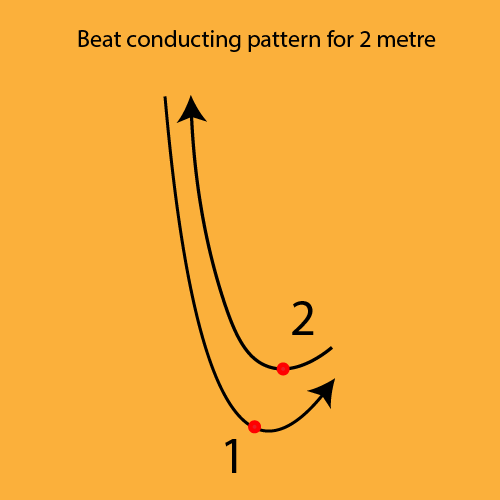
![]() Some students may find difficulty in following you as your motions might appear in an opposite fashion. To solve this, use your left hand and explain that now students will mirror your left hand with their right hands.
Some students may find difficulty in following you as your motions might appear in an opposite fashion. To solve this, use your left hand and explain that now students will mirror your left hand with their right hands.
- Students are seated and attentive.
- Draw the time name symbols for ta and ti-ti on the board for a song like Rain Rain.
- Ask students to show the strong and weak beats as they sing, with the strong beat shown by patting their laps and the weak beat by raising their arms and clicking their fingers.
- Explain that musicians raise their right hands in a sweeping motion, called conducting.
- To conduct in duple metre, hold your arm out in front of you and move your hand down on the first beat and up on the second. This motion is often called "beating time."
- The diagram to the left depicts the motion.
- Demonstrate the conducting motion in duple metre.
- Tell students they will 'attach' their right hand to your hand and must follow your actions.
 Creative movement
Creative movement
![]() Students take a partner and perform the actions of the song.
Students take a partner and perform the actions of the song.
- Students form a circle and pair up as partners, facing each other.
- Explain that students on the left will bow first.
- Lead the class in singing the song.
- Students alternate bowing to each other on the first two lines.
- They hold hands whilst facing each other and stomp their feet on the third line.
- Finally, they perform a half-turn on the last line.
 Listening
Listening
![]() Students listen to a story and create sound effects using their voices and classroom instruments.
Students listen to a story and create sound effects using their voices and classroom instruments.
- Students will create a story together by having each child contribute a sound effect using their voice or a musical instrument.
- Encourage them to listen carefully to the story and build on the sounds made by others.
- Divide the class into six groups, spread out around the classroom and each representing the animals: Kip the Kangaroo, Cody the Koala, Wally the Wombat, Penny the Platypus, Eddy the Emu, and Lola the Laughing Kookaburra.
- Read the story slowly, and as a character speaks or performs then, members of the group who have that animal's name will make sound effects or an action to describe the scene.
- For example, the kangaroo will hop, the koala makes biscuits, and the emu makes songs as the DJ.
- Use the audio player to assist in setting the atmosphere!
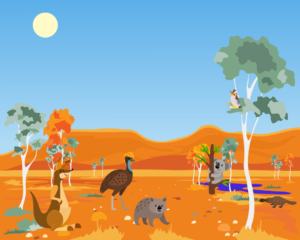
 Visual learning
Visual learning
![]() Students respond by clapping the rhythm of flashcards.
Students respond by clapping the rhythm of flashcards.
- Students are seated and attentive.
- Project the flashcards on the board.
- Ask students to clap the card you have chosen, and then they should clap and say the time names, including the crotchet rest, za.
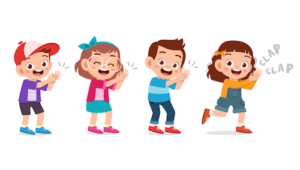
 Instruments
Instruments
![]() Students experiment with creating sounds from classroom instruments to represent animal sounds.
Students experiment with creating sounds from classroom instruments to represent animal sounds.
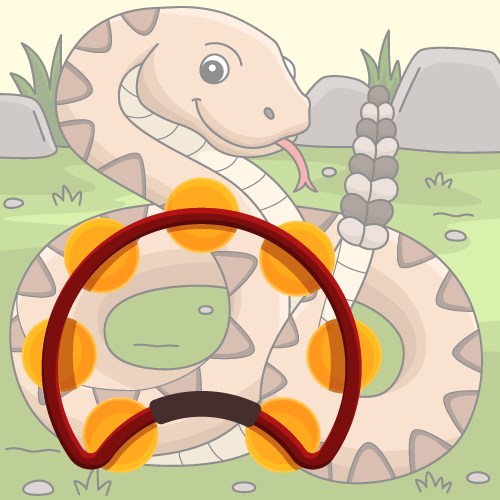
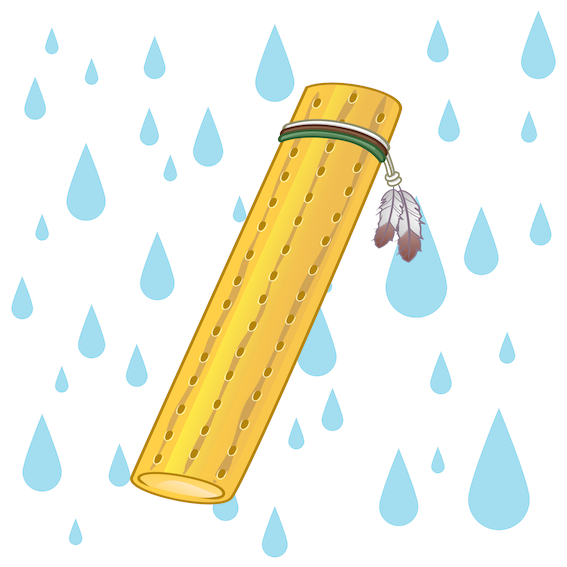
- An instrument zoo is a creative, hands-on approach to music education that allows students to explore various percussion instruments while imitating the sounds of animals. The aim is to provide a fun and engaging experience, encouraging young minds to develop an interest in music while fostering creativity, collaboration, and motor skills.
- Here is a more detailed breakdown of how an instrument zoo works:
Instrument Selection: Select a variety of percussion instruments, such as drums, tambourines, maracas, woodblocks, and guiros, that can be used to mimic animal sounds. Choosing instruments that are easy to play and have a wide range of sounds is important for keeping students engaged and fostering experimentation.
Animal Sound Introduction: Demonstrate how different percussion instruments can be used to imitate various animal sounds. For example, a tambourine might be used to create a rattlesnake sound, while a rainstick could represent raindrops. This helps students understand the concept of using instruments to create different sounds and sets the stage for their own exploration.
Exploration: Students are encouraged to experiment with the instruments and create their own animal sounds. They can either work individually or in small groups to explore the instruments and discover which ones best resemble the sounds of their favourite animals. This stage encourages creativity, critical thinking, and problem-solving skills.
Sharing and Collaboration: Once students can experiment, they can share their discoveries with the group. They may perform a short piece, demonstrate an animal sound they've created, or discuss which instruments they found most effective. This encourages communication, teamwork, and active listening skills.
Creative Composition: As a culmination of the activity, guide the students in composing a simple musical piece that incorporates their animal sounds. This could involve assigning each child or group an animal sound and creating a sequence or pattern for them to play. This final stage reinforces the skills learned throughout the activity and fosters a sense of accomplishment and group cooperation.
 Part work
Part work
![]() Students practise the crotchet rest, za.
Students practise the crotchet rest, za.
- Students are seated in a circle.
- Invite students to name a beat of silence [za].
- Receiving the correct answer, explain that students will sing Hot Cross Buns and will hold an imaginary bun in their hands.
- Explain that students must blow to cool down the buns every time they hear za. Lead the class in singing the song.
- Monitor students' performance and offer gentle guidance where necessary.
Students section

 Assess
Assess
Suggested lessons
Y1. Beat II

Y1. Beat III

Y1. Beat IV

